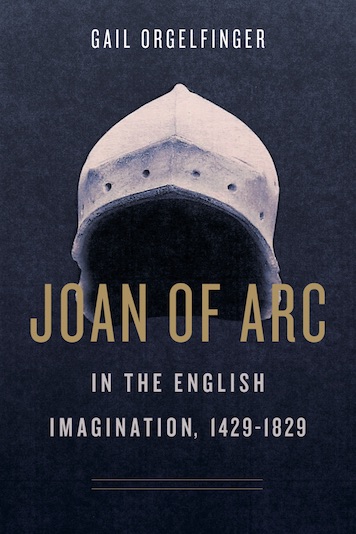This week the Hedgehog and the Fox explore four centuries in the afterlife of Joan of Arc. Our guest, Gail Orgelfinger, is a medievalist by training and a founding member of the International Joan of Arc Society; she’s also senior lecturer emerita at the University of Maryland, Baltimore County. Her new book from Penn State University Press, Joan of Arc in the English Imagination 1429-1829, focuses not so much on the historical Joan as on her afterlife and the multifarious uses to which her legend has been put, as the relationship between France and England changed over the centuries, along with attitudes to Catholicism and to women, inter al.
A very brief recap of the historical Joan might be useful. During a time of crisis in 1429, in the last phase of the Hundred Years War between France and England, the young peasant girl Joan persuaded France’s dauphin Charles of Orléans, its nobility, and ecclesiastics that God had mandated her mission to raise the English siege of Orléans and crown Charles king. But barely a year after her triumphs she was captured and sold to the English, who tried her on charges of heresy and, after months of interrogation, burned her alive in the marketplace in Rouen in May 1431.
 Joan’s story has been told and retold in England for 600 years; in the Middle Ages English chroniclers often portrayed as a witch. But by the time Winston Churchill wrote his History of the English-Speaking Peoples in the 1950s, he called her ‘an Angel of Deliverance … the ever-shining, ever-glorious Joan of Arc’. In her new book Gail Orgelfinger sets out to show that the story is more complex than a straightforward conversion from witch to saint, more nuanced than a simple battle between those for and those against Joan. Even in her lifetime, Joan elicited contradictory emotions in English commentators; for some, she was an object of dread, for others respect. Some English bystanders at her execution reportedly laughed, but others were touched by her piety and suffering And as centuries went by, different writers took radically different views on Joan in the same period, highlighting, ignoring or fabricating different aspects of her story.
Joan’s story has been told and retold in England for 600 years; in the Middle Ages English chroniclers often portrayed as a witch. But by the time Winston Churchill wrote his History of the English-Speaking Peoples in the 1950s, he called her ‘an Angel of Deliverance … the ever-shining, ever-glorious Joan of Arc’. In her new book Gail Orgelfinger sets out to show that the story is more complex than a straightforward conversion from witch to saint, more nuanced than a simple battle between those for and those against Joan. Even in her lifetime, Joan elicited contradictory emotions in English commentators; for some, she was an object of dread, for others respect. Some English bystanders at her execution reportedly laughed, but others were touched by her piety and suffering And as centuries went by, different writers took radically different views on Joan in the same period, highlighting, ignoring or fabricating different aspects of her story.
